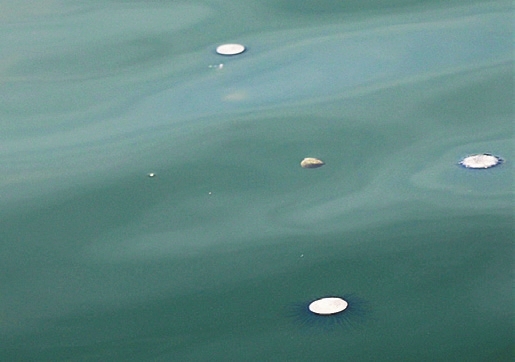
A LARGE number of blue button jellyfish, or Porpita porpita, have been spotted between Dongshan Island and Judiaosha sea area in the city’s east recently, Shenzhen Evening News reported Saturday. It was the first time that a relatively large number of blue button jellyfish have been found in Shenzhen’s sea area. Experts warned that although the toxicity of blue button jellyfish sting is mild, citizens still need to avoid direct contact with the jellyfish. The blue button jellyfish in the eastern area were first spotted by fishermen. However, a team led by Rao Yiyong, a researcher of an on-site scientific research team, collected samples of the blue button jellyfish and sea water in the nearby area. A reporter with the News joined the team in this expedition. Through laboratory analysis, it was confirmed that the blue button jellyfish were breeding. These organisms breed by themselves through a process called budding. Hence, many were spotted in the water. The following two days, the scientific research team increased the scope of monitoring and found that the blue button jellyfish also appeared in the Huidong area of Daya Bay. According to Rao, blue button jellyfish are bright blue and are named for their button-like shape. They mainly live in the warm tropical and subtropical waters of the Pacific, Atlantic and Indian oceans, as well as the Mediterranean Sea and eastern Arabian Sea. They are also distributed along China’s southeast coast and feed on plankton, copepods and crustacean larvae. Blue button jellyfish float on or near the surface of the sea. Rao said that blue button jellyfish are more commonly seen in Hainan Province’s coastal waters, according to historical literature. Their appearance in Shenzhen’s eastern sea area might be related to the recent continuous high temperatures. One more interesting thing to note about the blue button jellyfish ― although it is superficially like a jellyfish, each apparent individual is actually a colony of hydrozoan polyps, according to Rao. Rao warned that direct contact with the blue button jellyfish may induce skin rashes. Tourists should avoid rubbing their eyes if they have touched the jellyfish with their hands, because it may stimulate the eye nerves. (Zhang Yu) | 
